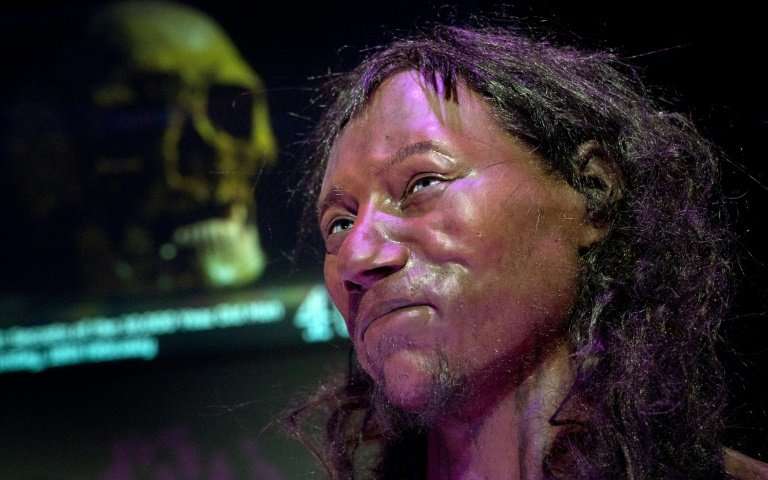
The typical Briton has a creamy white skin but 10,000 years ago, the Islanders would have looked quite different. Scientists sequenced the DNA extracted from Britain’s oldest complete skeleton, a 10,000-year-old male known as the Cheddar Man, and then reverse engineered his face. The facial reconstruction suggests that the first Britons had dark brown skin and blue eyes.
“It is very surprising that a Brit 10,000 years ago could have that combination of very blue eyes but really dark skin,” said Chris Stringer, a researcher at the National History Museum in London.
Cheddar Man had been discovered 115 years ago in Gough’s Cave, in Somerset’s Cheddar Gorge. Like most ancient people, the man was short by today’s standards, standing only 5 feet and 5 inches tall (1.65m), and likely died young, in his early 20s. Fractures that dot his skull suggest the man met his end violently. Most likely, members of his tribe placed him inside the cave.
A dark-skinned Briton
The remains have been studied for decades but it was only after genetic sequencing tools and techniques had matured that the ancient Briton’s genome could be analyzed. A genome is an organism’s complete set of DNA, including all of its genes. Each genome contains all of the information needed to build and maintain that organism. This also means that scientists can infer with a reasonable degree of confidence what the man must have looked like millennia ago just by matching his genes with characteristics from a database.
Sequencing DNA this old can be tricky since remains are susceptible to contamination and deterioration. But the team led by Professor Ian Barnes and Dr. Selina Brace, both at The Natural History Museum, was lucky. The Cheddar Man’s DNA is well preserved, which allowed the scientists to accurately read the man’s genome. In fact, his genome measured the highest sequencing accuracy out of all other studied remains from the Mesolithic period, also called the Middle Stone Age.
“In the cave you have a really nice, cool, dry, constant environment, and that basically prevents the DNA from breaking down,” Brace said in a statement.
Among the gene variants identified by the researchers were those associated with hair, eye, and skin color.

The analysis revealed that Cheddar Man had dark hair, perhaps curlier than average, blue eyes and dark brown skin. This sort of appearance might look odd today but, according to the British researchers, it was quite common for western Europe during the Mesolithic period. In fact, judging from his genome, Cheddar Man was closely related to the so-called Western Hunter-Gatherers.
It was only about 6,000 years ago that pale skin genes arrived in Britain with the migration of Middle Eastern farmers. These people, who had a cereal-based diet, were probably deficient in Vitamin D and had to compensate with light skin to absorb this essential nutrient. In time, this population absorbed the local hunter-gatherer tribes Cheddar Man belonged to.
“Cheddar Man’s genetic profile places him with several other Mesolithic-era Europeans from Spain, Hungary and Luxembourg whose DNA has already been analyzed,” Mark Thomas, a University College London professor and geneticist, said in a news release. “These ‘Western Hunter-Gatherers’ migrated into Europe at the end of the last Ice Age and the group included Cheddar Man’s ancestors.”
Armed with new clues about the man’s appearance and combined with digital scans of the skull, Dutch artists Alfons and Adrie Kennis performed a lifelike facial reconstruction. The striking new reconstruction stands in stark contrast to the initial estimates which suggested Cheddar Man had pale skin and fair hair. As such, the new research suggests that light skin arrived far later in Europe than previously believed.
The story of the Cheddar Man’s new face and how researchers at the Natural History Museum in London sequenced his genome will soon appear in a documentary, due to air on Channel 4 on February 18.
“It’s a story all about migrations throughout history,” Alfons Kennis told Channel 4 for the documentary.
“It maybe gets rid of the idea that you have to look a certain way to be from somewhere. We are all immigrants,” he added.






